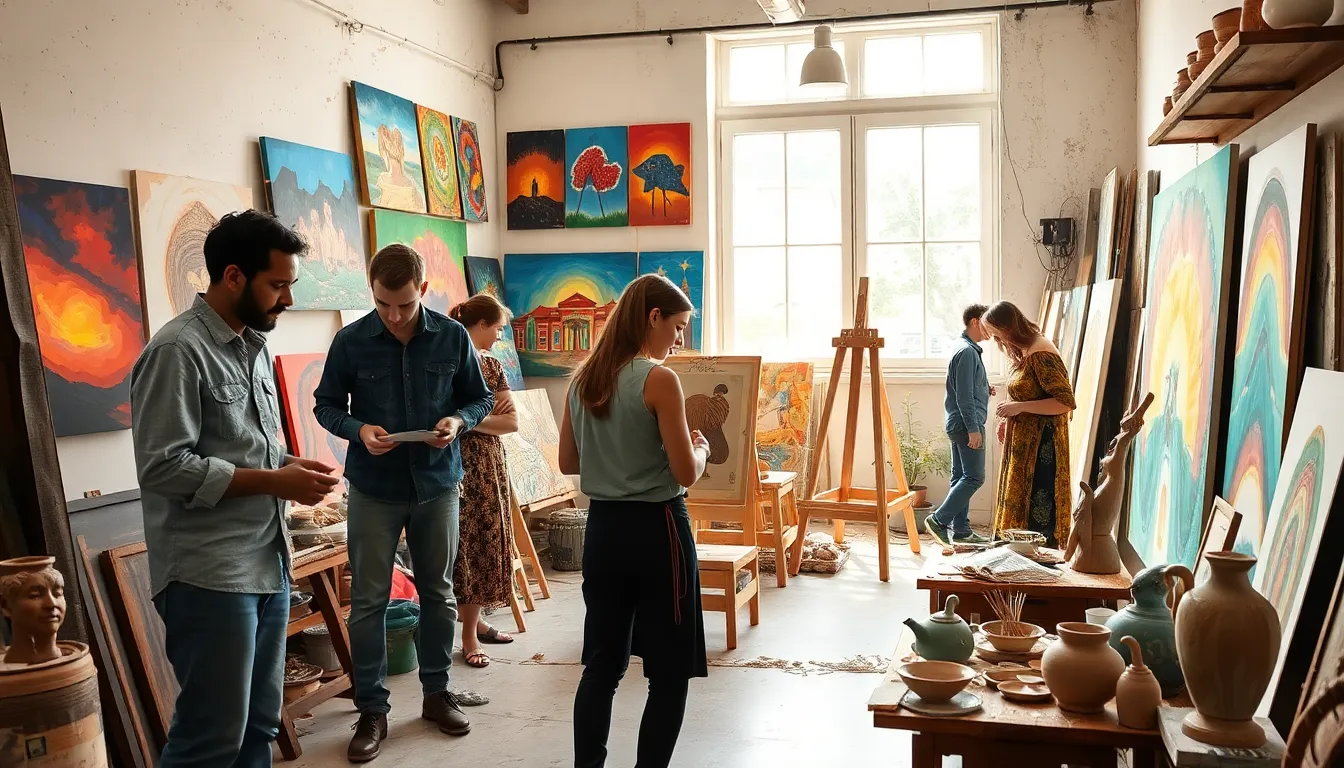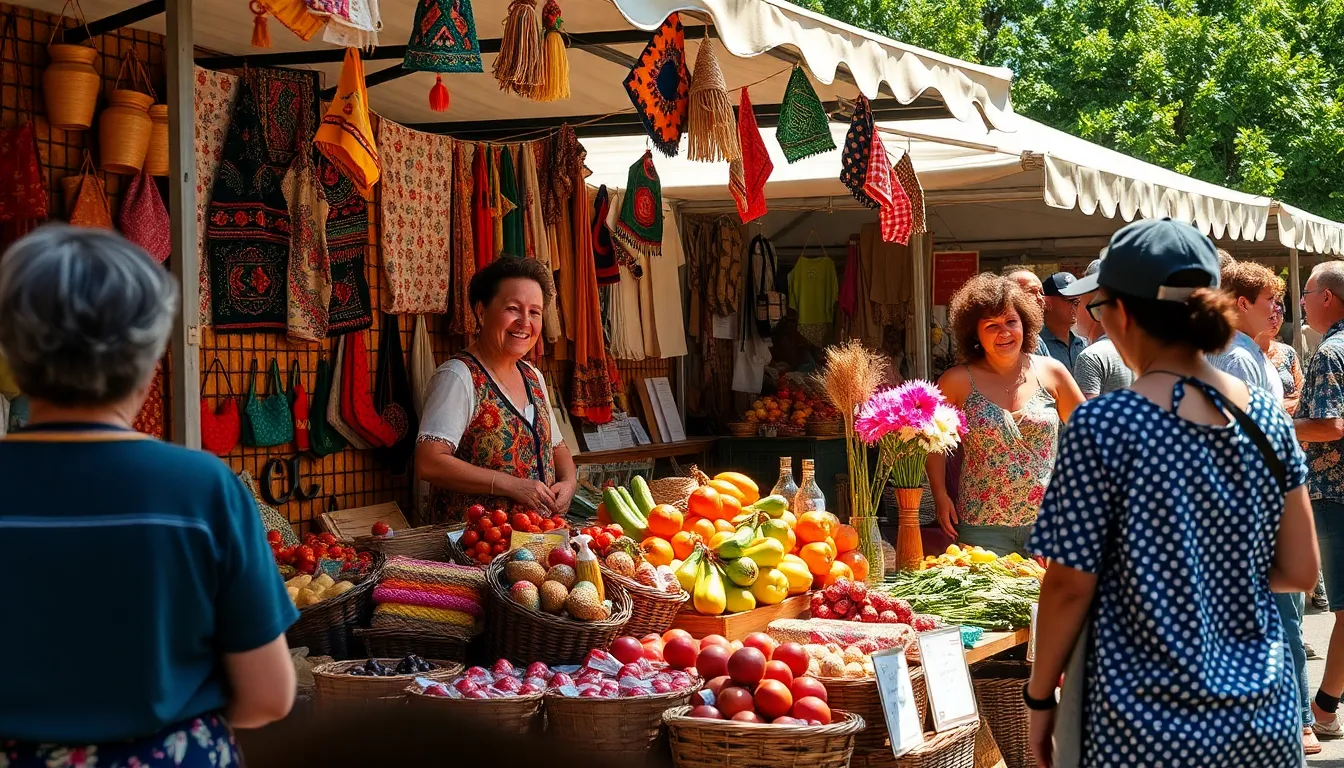In the vibrant tapestry of contemporary art, Basqueserpartists stand out as a unique and influential movement. Rooted in the rich cultural heritage of the Basque Country, these artists blend traditional techniques with modern expressions, creating a dynamic dialogue between past and present. Their work often reflects the region’s history, identity, and social issues, making it deeply resonant and relevant.
As the world increasingly embraces diverse artistic voices, Basqueserpartists are carving out their niche on both national and international stages. With a commitment to innovation and authenticity, they challenge conventional boundaries, inviting audiences to explore the complexities of Basque culture. This article delves into the essence of Basqueserpartists, highlighting their contributions and the impact they have on the global art scene.
Table of Contents
ToggleOverview of Basqueserpartists
Basqueserpartists represent a dynamic fusion of historical art practices and contemporary techniques, rooted in the rich cultural landscape of the Basque Country. Their artistic creations often reflect local traditions, weaving elements of Basque identity into modern contexts. These artists address a range of themes, including social issues, environmental concerns, and identity politics, making their work both relevant and thought-provoking.
Each Basqueserpartist embodies a unique artistic voice while contributing to the collective narrative of Basque culture. This diverse group of creators employs various mediums, from painting and sculpture to digital art and performance. They often incorporate traditional materials, linking their contemporary expressions to ancestral roots and preserving cultural heritage.
As Basqueserpartists gain visibility on both national and international platforms, their work invites dialogues about identity, culture, and innovation. This increased recognition marks a significant shift in how Basque art is perceived worldwide. By challenging conventional artistic boundaries, they not only redefine the Basque artistic identity but also engage a global audience, fostering a deeper understanding of their cultural complexities.
History and Origin
The Basqueserpartists movement has roots in the rich cultural tapestry of the Basque Country. This section outlines the early influences that shaped the movement and highlights key figures who significantly contributed to its evolution.
Early Influences
Early influences on Basqueserpartists include traditional Basque art forms and historical events. Folk art such as wood carving and textiles laid a foundation for their contemporary expressions. Political turmoil, particularly during the Spanish Civil War, instilled a sense of identity and resistance within artists, prompting a reevaluation of cultural representation. Additionally, the impact of the avant-garde movements of the 20th century introduced innovative techniques, encouraging artists to experiment and express their individuality while remaining grounded in their heritage.
Key Figures in the Movement
Key figures in the Basqueserpartists movement include artists who have played pivotal roles in its development. Notable contributors include:
- Agustín Ibarrola: Known for his large-scale installations that merge ecological themes with Basque identity.
- María José Aranguren: Celebrated for her use of traditional mediums, she emphasizes the connection between heritage and contemporary art.
- Xabier Montfort: A performance artist who explores identity politics and social issues, often engaging directly with the community.
- Nika Mendiola: Recognized for her digital art installations that reinterpret Basque symbols in modern contexts.
These artists not only advance artistic techniques but also embody the movement’s commitment to cultural preservation while addressing contemporary societal concerns.
Characteristics of Basqueserpartists
Basqueserpartists exhibit distinct characteristics that reflect their cultural heritage while embracing modern artistic expressions. Their work is marked by innovative techniques and a commitment to the narrative of Basque identity.
Artistic Style
Basqueserpartists blend traditional techniques with contemporary styles, creating a unique artistic language. They utilize mediums such as painting, sculpture, digital art, and performance. Each artist’s work incorporates elements of Basque culture, whether through the use of traditional materials or the exploration of historical themes. Many artists apply vibrant colors, dynamic forms, and textural contrasts, fostering engagement and evoking emotional responses. This integration of past and present not only preserves their cultural roots but also invites fresh interpretations from diverse audiences.
Themes and Motifs
Basqueserpartists frequently explore themes that resonate with their cultural and social context. Common motifs include:
- Identity Politics: Artists address the complexities of Basque identity, reflecting on issues related to autonomy and cultural expression.
- Social Issues: The art often critiques contemporary society, shedding light on challenges such as inequality, environmental concerns, and historical injustices.
- Cultural Heritage: Many works pay homage to ancestral traditions while questioning their relevance in modern society, creating a dialogue between generations.
- Nature and Landscapes: The depiction of the Basque landscape serves as a powerful motif, connecting the artists to their homeland and its natural beauty.
This thematic richness reinforces the importance of Basque culture in their art, fostering a deeper understanding and appreciation among viewers.
Impact on Contemporary Art
The Basqueserpartists significantly influence contemporary art, both through their unique styles and collaborative spirit. Their work inspires artists globally, encouraging new dialogues and innovative techniques.
Influence on Other Artists
Basqueserpartists serve as a pivotal inspiration for emerging and established artists across various mediums. Their integration of traditional Basque techniques with contemporary practices challenges and reshapes artistic perceptions. Many artists draw from the themes of social justice and cultural identity prevalent in Basqueserpartist work, fostering a collective understanding of historical narratives within modern contexts. This impact is evident in the increased exploration of cultural roots and societal issues among artists who engage with their art in meaningful ways.
Reception in the Art Community
The reception of Basqueserpartist work within the art community is increasingly positive, marked by growing recognition in exhibitions and critiques worldwide. Art critics praise the movement for its authenticity and innovative approaches, often highlighting how these artists push boundaries in contemporary art. Institutions are beginning to feature Basqueserpartist exhibitions, further solidifying their place in the global art discourse. As audiences engage with their art, conversations around Basque culture and identity gain momentum, reflecting a robust appreciation for the movement’s complexities.
Conclusion
The Basqueserpartists movement stands as a testament to the power of art in expressing cultural identity and addressing contemporary issues. By merging traditional techniques with modern expressions, these artists not only preserve their heritage but also challenge societal norms. Their work resonates with audiences far beyond the Basque Country, fostering a global dialogue about identity and innovation.
As they continue to gain recognition on various platforms, the Basqueserpartists are reshaping the narrative around Basque culture. Their commitment to authenticity and creativity ensures that their voices will remain influential in the art world, inspiring future generations of artists. Through their unique perspectives, they invite everyone to engage with the rich complexities of their cultural landscape.




